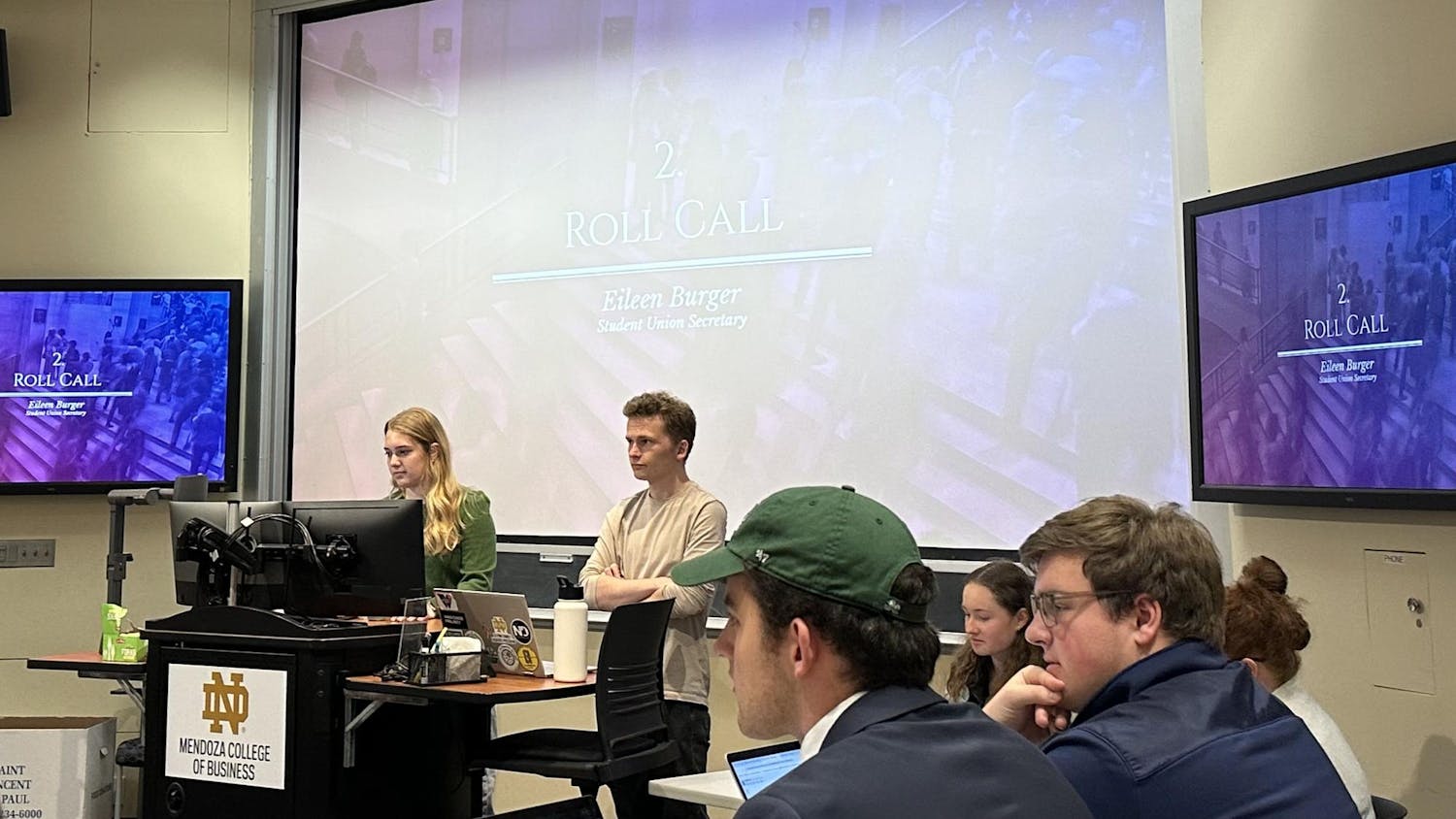Southern, Catholic and bird lover are some of the words used most frequently to describe author Flannery O’Connor, the subject of a lecture delivered Tuesday afternoon by Angela Alaimo O’Donnell, professor at Fordham University and associate director of the Curran Center for American Catholic Studies.
O’Donnell touched on these three facets of O’Connor’s life in her talk, entitled “Between the House and the Chicken Yard: The Life and Legacy of Mary Flannery O’Connor.” O’Connor was born in Savannah, and her family moved to Andalusia, a rural Georgia farm, Alaimo O’Donnell said, where the author took a great delight in raising chickens.
“O’Connor’s first brush with fame occurred courtesy of her bird collection — when a Pathé newsman caught word of a Georgia girl who taught a bird to walk backwards, he made his way south and filmed Mary Flannery and her trick chicken,” she said. “She had a hunger for fame after this, and from that day forward she began to collect chickens, though of course her fame would come from other things.”
The author received an MFA from the prestigious Iowa Writers' Workshop and moved to New York, actively participating in literary and intellectual circles, Alaimo O’Donnell said. However, O'Connor was forced to return permanently to Andalusia, after she was diagnosed with lupus, an autoimmune disease.
“O’Connor would endure this exile gracefully and with good humor until her death on Aug. 3, 1964,” she said. “Flannery no longer belonged to Georgia, to the small-town world of Milledgeville, and her mother’s friends. Her childhood sense of herself as a freak returned, a preoccupying idea that appears in the stories she wrote. … O’Connor’s stories often feature characters who clearly do not belong, sometimes by virtue of some physical affliction or deformity, or by virtue of a radically different way of seeing the world from those around her.”
O’Connor’s fiction became her lifeline, and she drew inspiration from the people and events in her Southern community, Alaimo O’Donnell said.
“She wrote every morning – two hours was all she could manage, despite the painful and debilitating effects of both the disease and the medication prescribed to remedy it,” she said. “Against all odds, O’Connor would produce two novels, 32 short stories, and many essays, reviews and commentaries and hundreds of letters in her thirteen years at Andalusia.”
O’Connor may not occur to many readers as a Christian writer, Alaimo O’Donnell said, for she does not appear to write from a particular religious viewpoint. However, although O'Connor's characters are rarely Catholic, they require an experience of grace.
“O’Connor’s characters, like the freak chickens she raised as a child, are grotesques of every imaginable kind. They include mass murderers, social misfits, religious zealots, moral cretins, fake bible salesmen, one-legged women with Ph.D.s,” she said. “The one thing that binds all of O’Connor’s characters together is the fact that they are all in need of conversion or radical change.”
Implicit in her creation of characters in need of conversion, her use of violence as a means of grace and her mingling of the comic and tragic, is a deeply religious vision, Alaimo O’Donnell said.
“Flannery sees the possibility of redemption available to humanity in all places, at all times and through the most unexpected of means,” she said.
While O’Connor saw her life as utterly ordinary, Alaimo O’Donnell said O’Connor was an author who integrated her faith and art so thoroughly that they became one practice.
“Her own art becomes sign and symbol of the creative force that generates and governs the world, and so her own writing becomes, both in practice and in fact, a form of sacrament,” she said.













